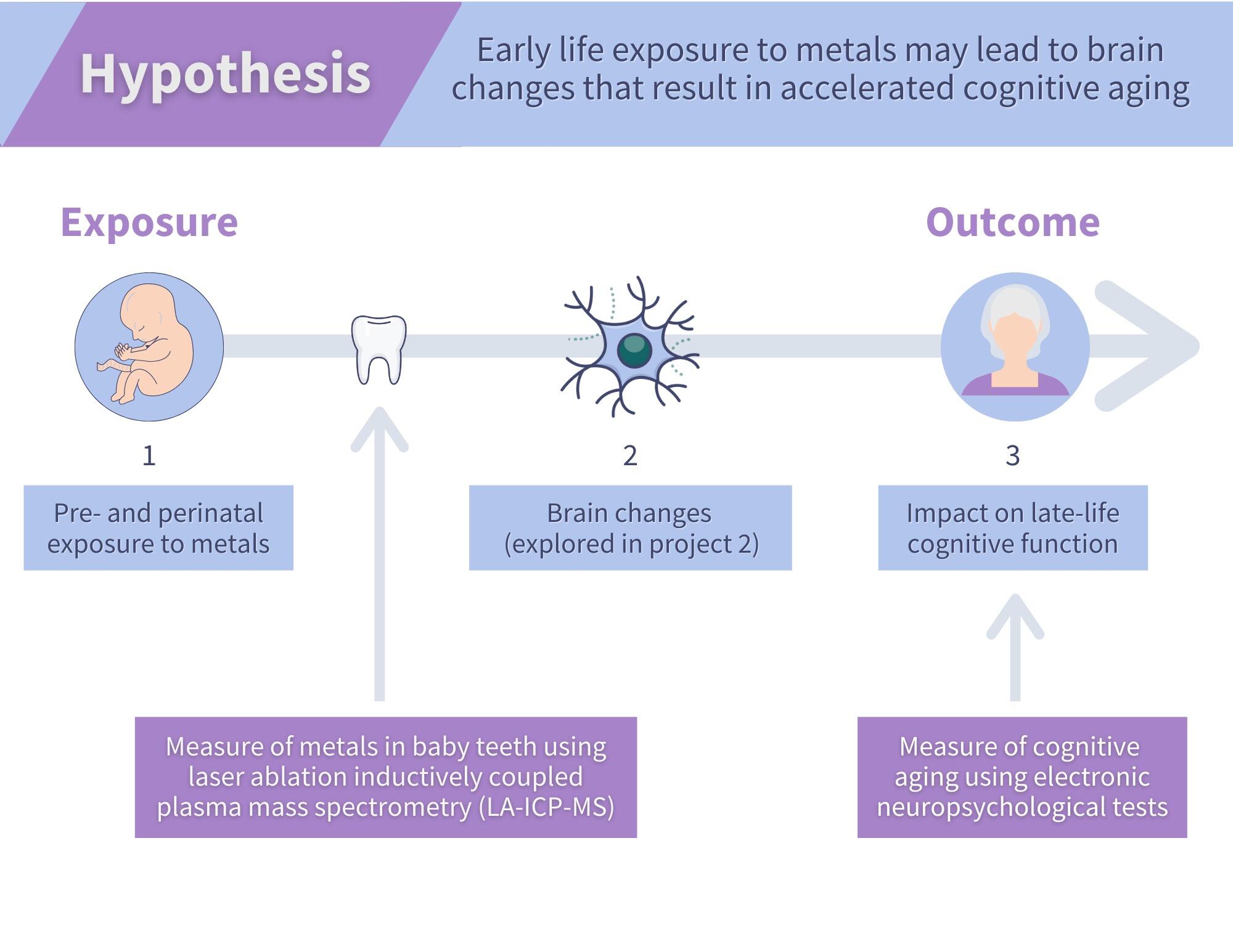![]() Animal studies suggest a relationship between early life exposure to metals and cognitive decline in later life. The St. Louis Baby Teeth Study provides a unique opportunity to precisely measure pre- and post-natal exposure to metals.
Animal studies suggest a relationship between early life exposure to metals and cognitive decline in later life. The St. Louis Baby Teeth Study provides a unique opportunity to precisely measure pre- and post-natal exposure to metals.
Our Goals
The participants of the original research study were children in the 1950s and 1960s and are now much older. We are able to use their previously collected baby teeth to:
- explore associations between early-life metal exposures and cognitive function in older age
- determine possible epigenetic mechanisms for such associations
Our Approach
This is a cohort study of a subset of participants in the original St. Louis Baby Tooth (SLBT) study who donated their baby teeth in the 1950s and 1960s and are now in their 60s and 70s. We have located several thousand of these tooth donors to recruit them for this study.
To determine the relationship between early life metal exposures and late life cognitive function, we will correlate concentrations of metals in their baby tooth enamel (measured using laser-ablation inductively coupled plasma mass spectrometry, LA-ICP-MS), with their performance in an online cognitive test battery.
To explore possible epigenetic mechanisms for observed associations, we will collect blood samples from a further subset of participants to examine the relationship of EV miRNA expression (see Project 2) to early-life exposure to metals and the results of the cognitive tests.



















